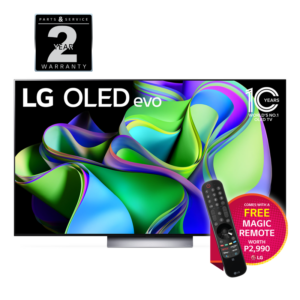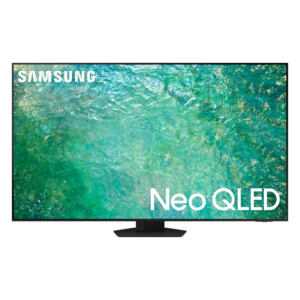OLED vs QLED – Which Should You Choose?
In the ever-evolving world of television technology, the debate between OLED TVs and QLED TVs remains a hot topic among consumers and tech enthusiasts alike. As advancements continue, understanding the nuances of these technologies becomes crucial for making an informed decision. This article delves into the world of QLED and OLED TVs, exploring their features, differences, and helping you determine which one suits your needs best.
What is a QLED TV?
QLED, or Quantum Dot LED, represents an innovative approach to traditional LCD LED TVs. It incorporates a layer of quantum dots between the LED backlight and the LCD layer. These quantum dots are tiny semiconductor particles that enhance the conversion of LED backlight into vibrant red and green light, resulting in a wider color gamut and improved brightness. Samsung’s QLED TVs, for example, showcase this technology’s capability to deliver enhanced colors and higher peak luminance, making them ideal for well-lit spaces.
What is an OLED TV?
OLED stands for Organic Light-Emitting Diode. Unlike QLED and traditional LCDs, each pixel in an OLED panel emits its own light, enabling precise control over brightness and color. This technology allows for true black levels, as pixels can be completely turned off, and offers a significant contrast ratio and color vibrancy. OLED TVs are known for their thin design, with the capability of being as slender as paper, ideal for modern, sleek home aesthetics.
What is Mini-LED TV?
Mini-LED TV is a relatively newer technology that improves upon traditional LED-LCD displays. It uses thousands of tiny LEDs as a backlight, which offers better control over local dimming zones. This results in improved contrast and black levels compared to standard LED-LCD TVs. Mini-LEDs can be considered a bridge between traditional LED TVs and the more advanced QLED and OLED TVs.
QLED vs. OLED TVs: What are the Key Differences?
- Self-Illumination: OLED’s self-emissive pixels offer perfect black levels and no light bleed, while QLED relies on an LED backlight.
- Contrast: OLED excels in native contrast and black depth, while QLED achieves comparable levels with local dimming.
- Brightness: QLED screens are typically brighter, reaching higher peak luminance.

1. 2023 Model- LG OLED evo 65in 4K UHD Smart TV OLED65C3PSA
The 2023 LG OLED evo 65in 4K UHD Smart TV OLED65C3PSA is a sleek and advanced television with almost invisible bezels and a design refined over 10 years, offering a seamless visual experience. It features the α9 AI Processor 4K Gen6 for exceptional picture and sound quality, OLED evo technology for brilliant color accuracy, and several gaming-oriented features like Game Optimizer and support for G-SYNC, FreeSync, and VRR.

2. Samsung QA65QN85CAGXXP 65in Neo QLED 4K Smart TV
The Samsung QA65QN85CAGXXP 65in Neo QLED 4K Smart TV offers a blend of style and high performance with its sleek design and 4K resolution, delivering sharp, vivid colors and detailed images for an immersive viewing experience. It features Neo QLED technology with Quantum Matrix technology, providing precise lighting, deep blacks, and brilliant colors, enhancing every scene viewed on its 65-inch screen.
QLED vs. OLED TVs: Which One is Better?
Determining which is better depends on your viewing preferences and environment. QLED TVs, with their higher brightness, are better suited for bright rooms, whereas OLED TVs, with superior black levels and contrast, excel in darker settings.
Black Levels and Contrast
OLED TVs offer unparalleled black levels and contrast. This superiority stems from their ability to turn individual pixels completely off, resulting in true blacks and a high contrast ratio. The absence of a backlight means there’s no light bleed, making dark scenes in movies and games more immersive. On the other hand, QLED TVs use local dimming to improve black levels. While they have made significant strides, they still fall short of the absolute black levels achievable by OLEDs.
Brightness
Brightness is a domain where QLED TVs excel. Their LED backlighting, enhanced with quantum dot technology, allows them to reach higher levels of brightness compared to OLEDs. This makes QLED TVs a more suitable choice for rooms with lots of ambient light, such as sunlit living rooms or spaces with bright lighting. OLED TVs, while offering adequate brightness, may not perform as well under these conditions due to their lower peak luminance.
Color Space
QLED TVs have a slight edge in color vibrancy and volume due to the quantum dot layer, which enhances color accuracy and saturation. They are particularly adept at displaying a wide range of colors at high brightness levels, which is crucial for HDR content. OLED TVs also offer a broad color spectrum and excellent color accuracy, but their performance in color volume can slightly diminish at peak brightness levels.
Response Time, Input Lag, and Refresh Rate
In the realm of gaming and fast-paced content, response time and refresh rate are critical. OLED TVs have an advantage here, with almost instantaneous pixel response times and higher refresh rates, typically up to 120 Hz. This results in smoother motion and less motion blur, ideal for gaming and action-packed scenes. While QLED TVs have improved in this aspect, their response times and refresh rates generally trail behind those of OLEDs. However, for casual gaming and regular content viewing, this difference might not be noticeable.
Size
Both QLED and OLED TVs are now available in a wide range of sizes, catering to different room sizes and viewer preferences. OLED TVs were initially limited in size, but recent advancements have seen them available in sizes up to 88 inches. QLED TVs have always been available in larger sizes, with options extending up to 100 inches, making them suitable for large spaces and home theaters.
Screen Burn-In
Screen burn-in is a concern with OLED TVs. This phenomenon occurs when a static image is displayed for prolonged periods, leading to permanent discoloration of the pixels. It’s particularly noticeable in scenarios where static elements, like channel logos or game HUDs, are constantly on display. QLED TVs, owing to their LCD technology, are immune to burn-in, making them a safer choice for scenarios where static images are common.
Power Consumption
OLED TVs are more energy-efficient compared to QLED TVs. Since each pixel emits its own light and can be turned off completely, OLED TVs consume less power overall. This is especially true in scenes with lots of dark areas. QLED TVs, with their LED backlight, generally consume more power, although advancements in LED technology have improved their energy efficiency over the years.
Which Should You Choose?
The choice between QLED and OLED ultimately boils down to personal preference and usage context. If you prioritize vibrant colors, higher brightness, and are less concerned about potential burn-in, a QLED TV might be your choice. However, if you seek exceptional contrast, deep blacks, and energy efficiency, an OLED TV could be more suitable.
In conclusion, both QLED and OLED TVs offer distinct advantages. Your decision should align with your viewing habits, room environment, and aesthetic preferences, ensuring that your investment enhances your multimedia experience.

